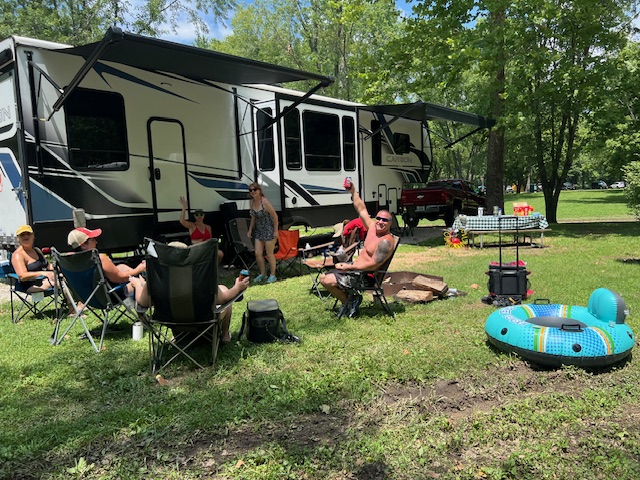Camping Hacks: Tips for a Comfortable Stay at Ozark Outdoors
Camping Tips
Preparing for a camping trip at Ozark Outdoors Resort requires thoughtful planning to ensure your outdoor adventure is comfortable and memorable. The beautiful landscapes and natural surroundings offer an incredible escape, but without proper preparation, your camping experience might fall short of expectations. With the right camping hacks and techniques, you can transform your basic tent setup into a cozy haven that rivals the comfort of home.
Whether you’re a first-time camper or seasoned outdoor enthusiast, the Ozarks present unique challenges and opportunities. From selecting the ideal campsite based on your preferences to packing essential gear efficiently, every detail matters. You’ll want to consider family-friendly areas for quieter atmospheres or sites that accommodate later activities if that’s more your style.
Preparing Your Camping Gear
Proper preparation of your camping gear ensures comfort and safety during your stay at Ozark Outdoors. Taking time to organize your equipment before departure will save you frustration and allow you to fully enjoy the natural surroundings.
Selecting the Right Tent and Sleeping Arrangements
Choose a tent that matches the season and conditions at Ozark Outdoors. For spring and summer camping, a 3-season tent provides adequate ventilation and rain protection. If camping during colder months, invest in a four-season tent with stronger poles and less mesh.
Rolling your clothes instead of folding them saves space and keeps your tent organized. This simple hack prevents your living space from becoming cluttered with scattered items.
For sleeping arrangements, layer your comfort elements:
- Start with a tarp under your tent for moisture protection
- Add a sleeping pad or air mattress for cushioning
- Use a sleeping bag rated for the expected temperatures
- Consider a sleeping bag liner for extra warmth and cleanliness
Never sleep directly on the ground if you want to stay comfortable. Even a thin barrier makes a significant difference in warmth and comfort.
Packing Essential Tools and Safety Equipment
Always pack a comprehensive first-aid kit with bandages, antiseptic wipes, pain relievers, and any personal medications. Check expiration dates before each trip.
A quality multi-tool serves countless purposes around camp. Look for one with pliers, knife, screwdriver, and can opener functions at minimum.
Essential safety equipment includes:
- Headlamp with extra batteries
- Weather-resistant lantern for camp illumination
- Waterproof matches or reliable firestarter
- Emergency whistle and compass
- Weather radio for storm alerts
Pack high-quality bug spray to protect against ticks and mosquitoes that are common in the Ozarks. Consider treating your clothing with permethrin for added protection against insects.
Optimizing Your Camp Kitchen
Create a dedicated kitchen box with all your cooking gear to simplify packing and setup. This approach means you’ll only need to replenish consumables between trips rather than reorganizing everything.
Essential cookware includes:
- Cast iron skillet or lightweight camp pots
- Collapsible water container
- Insulated mugs and durable plates
- Biodegradable soap and scrubber
A reliable camp stove makes meal preparation easier than cooking over a fire. Pack extra fuel to ensure you don’t run out during your stay.
Consider preparing coffee bags in advance using coffee grounds in paper filters tied with string. This gives you fresh coffee without bringing a bulky coffee maker to the campsite.
Enhancing Campsite Comfort and Enjoyment
Your camping experience at Ozark Outdoors can be dramatically improved with thoughtful preparation and smart techniques. The right setup, proper maintenance, and safe activity planning will transform your outdoor adventure.
Effective Campsite Setup Techniques
Finding the perfect spot is crucial for comfort. Choose flat, firm ground for your tent, at least 200 feet from water sources. This prevents flooding issues and minimizes environmental impact.
Position your camping chairs strategically—place them in shaded areas during hot days and sunny spots during cooler mornings. Consider the wind direction when setting up your cooking area to keep smoke away from your relaxation zone.
Maximize tent ventilation by utilizing mesh windows properly. Open them during the day to prevent condensation and mustiness, but close them at night if temperatures drop.
Keep a Nalgene bottle filled with hot water near your sleeping bag on cold nights—it works as a makeshift heater and provides drinking water by morning.
Maintaining Cleanliness and Managing Clothing
Roll your clothes instead of folding them to save space and keep items organized. This technique makes finding specific items easier and reduces wrinkles.
Pack base layers made of moisture-wicking materials to stay comfortable in variable Ozark temperatures. Always have dry clothes sealed in waterproof bags for emergencies or unexpected weather changes.
Create a dedicated changing area in your tent or use a pop-up privacy tent. This keeps dirt and mud confined to one space and helps maintain overall campsite cleanliness.
Keep a small portable clothesline and several pieces of duct tape handy—they’re invaluable for drying swimwear after rafting adventures or quick repairs to gear.
Apply sunscreen regularly, even on cloudy days. The Ozarks’ varying elevations can intensify UV exposure, making sun protection essential during all outdoor activities.
Engaging in Outdoor Activities Safely
Wear proper hiking boots with ankle support when exploring Ozark trails. The terrain can be unpredictable, and good footwear prevents injuries that could ruin your trip.
Carry a small backpack with water, snacks, and first aid supplies even for short hikes. Unexpected weather changes are common in the Ozarks, so include a lightweight rain poncho.
For swimming and rafting activities, use water shoes to protect against sharp rocks and slippery surfaces. Always check local water conditions before entering any body of water.
Plan your food wisely for various activities—pack high-energy, lightweight options for hiking days and more substantial meals for days at the campsite. This strategy prevents energy crashes during demanding activities.
